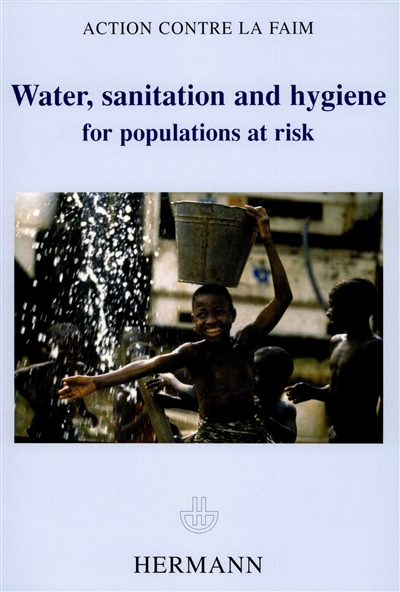par Action contre la faim
Hermann
-
-
Disponible - 628 WAT
Niveau 3 - Techniques
par Action contre la faim
Hermann
-
Disponible - 628 WAT
Niveau 3 - Techniques

Présente les modes d'approvisionnement en eau de populations en situation précaire, de la mise en place de programmes de recherches et d'exploitation des eaux souterraines ou provenant des fleuves ou des eaux de pluies à la description de l'équipement technique permettant la réalisation des infrastructures.

Access to water and sanitation is one of the major challenges for the 21st century. According to WHO (2004), 1.1 billion people do not have access to safe water and 2.4 billion people do not have access to basic sanitation facilities. As a consequence around 4 million people, the majority of who are children, die every year from water, sanitation and hygiene related diseases.
Water is not only an important factor of public health, but also of general livelihoods and development : crop production, livestock production, industry, commerce and daily life depend on access to water.
Water-supply and sanitation conditions therefore directly affect health and food security and are key components in the fight against Hunger and Malnutrition.
For 25 years, in line with its vocation of fighting Hunger, the Action contre la Faim international network has been implementing field programmes aimed at supporting populations in humanitarian situations, along with research and technical development in order to optimise its interventions. This book is the result of this experience and presents methods and techniques of intervention, not only to provide and ensure access to water - groundwater prospecting, drilling, well digging, constructing spring catchments and gravity supply systems, treatment and distribution of surface water and collection of rainwater - but also sanitary measures, hygiene promotion, capacity building of communities and local partners, and much more.
This manual is the second edition of Alimentation en eau des populations menacées, by Éric Drouart and Jean-Michel Vouillamoz, published in 1999 ; it has been deeply reviewed, revised, updated and extended, under the coordination of Hubert Sémiond and Francisco González, with more than 60 % of new information. It focuses on efficient and concrete action, as well as on context and needs analysis. It is intended for those concerned by programmes involving water supply, sanitation, hygiene promotion and local capacity building.
Disponible - 628 WAT
Niveau 3 - Techniques